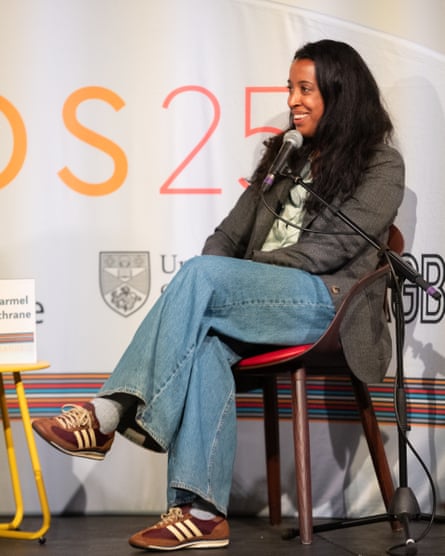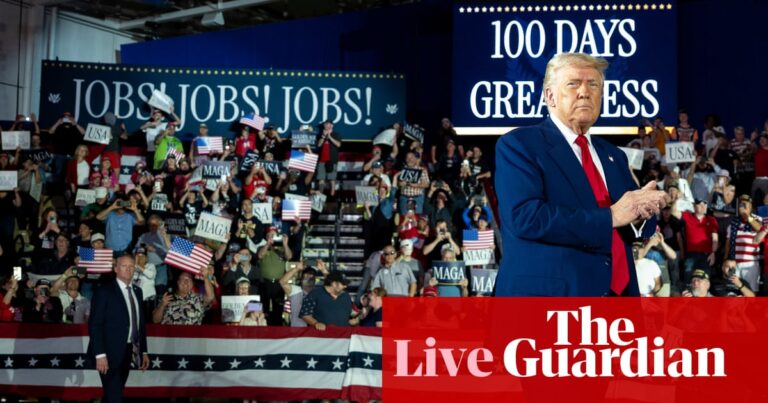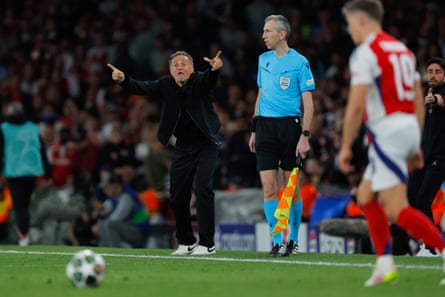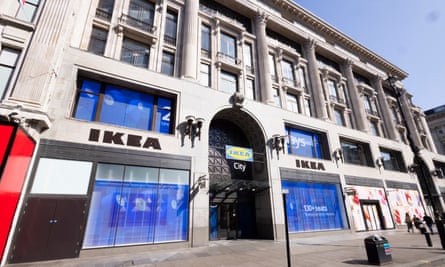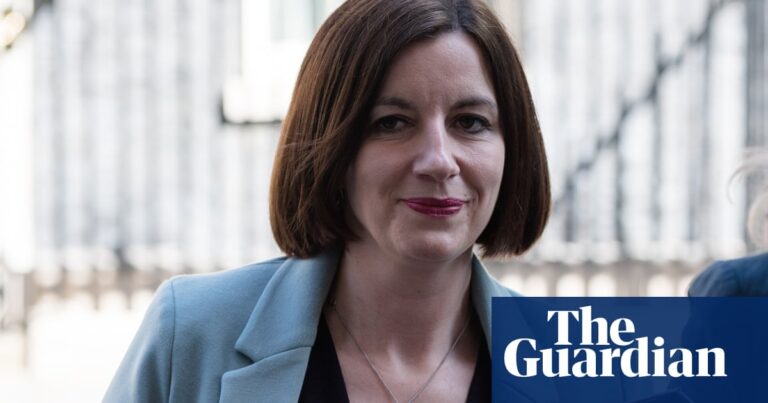Disney superfans travelled from 36 countries and all 50 US states to take part in the company’s biennial fan conference in Anaheim, California, last weekend. The sold-out event attracted a diverse crowd of tens of thousands, with Moanas, Tianas, and Maleficents mixing with Wolverines and Darth Vaders.
But one group was not well represented: young people between the ages of 12 and 27, also known as generation Z.
The demographics of Disney’s D23 fan conference put a spotlight on a question that has been simmering on message boards, in social media videos and conversations among older Disney superfans. Is gen Z simply less excited about Disney than previous generations?
The heavy presence of millennial Disney adults at the ultimate Disney fan conference put this question in sharp relief. Hundreds of people lined up on Friday afternoon for a panel celebrating the 30th anniversary of Toy Story, a film that debuted in 1995. Other D23 panels celebrated even more vintage classics: the 50th anniversary of Marvel’s Wolverine, the 70th anniversary of the Muppets, the 90th anniversary of Donald Duck.
Compared with the Toy Story panel, the lines were not as long for a later fan panel on Percy Jackson and the Olympians, a new Disney+ fantasy series pitched to younger viewers. As they waited in the line, Nancy Sanchez, 25, and April Sanchez, 23, sisters from Los Angeles, said they had noticed that there were fewer young people like themselves.
“Kids these days are too into their iPads, or too into the influencers,” Nancy Sanchez said. Many kids seemed to be trying to develop “a whole personality about them trying to grow up faster”.
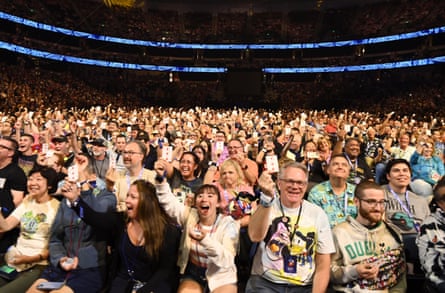
Next to them in line, Sami Wilde, 22, a Disney fan from Orlando, Florida, said that gen Z appeared to be “less into” the Walt Disney film classics than previous generations, but that they were still excited about other Disney-owned franchises, from the Marvel movies to Star Wars.
Another factor in gen Z’s relationship with Disney, Wilde said, was “how expensive things are”.
Tickets for Disney’s “ultimate fan event”, held at a conference center in Anaheim, cost nearly $100 a day, though premium packages for the weekend cost up to $2,599 per person.
Tickets to Disney theme parks, meanwhile, start at between $100 and $200 a day and the company now charges a range of additional fees for access to shorter lines for the most popular rides. (On the regular lines, wait times can stretch to multiple hours.) One outside analyst estimated that the cost of an average Disney vacation for a family of four has increased nearly 25% since 2019, even after adjusting for inflation.
Living in Orlando, where Disney World is located, Wilde said she knows young people who are Disney cast members, but who don’t earn enough to afford the Disney experience at the full ticket price.
“It’s a world problem, it’s not a Disney problem,” Wilde said. “The world is just so expensive after the pandemic. The jobs are not there, or they’re not paying enough.”
A question of platforms
For Disney, a century-old company that thinks in generational terms, whether gen Z continues to be excited about Disney is a crucial business question.
Disney’s chief brand officer, Asad Ayaz, pushed back on the idea that the smaller numbers of gen Z fans showing up for the D23 conference might represent a broader trend.
“Our fandoms and our fans and different generations show up in different ways,” Ayaz said, calling the in-person conference in California just one form of engagement among many, from social media to YouTube.
But he also made it clear that Disney was keeping a close eye on gen Z, and its changing media and entertainment habits.
“This is an audience that is heavily on their devices,” Ayaz said. Disney is “making sure that not only do we have the right kind of movies and shows for this important audience, but also making sure we are on the platforms where gen Z spends the most amount of time, whether that is TikTok or Instagram or Snapchat or gaming.”
Disney currently touts nearly 14 million followers on the gen Z favorite TikTok, compared with its 54 million followers on Facebook, the platform now perceived in the US as most popular with older people, particularly boomers; and nearly 40 million on Instagram, a more millennial-driven platform.
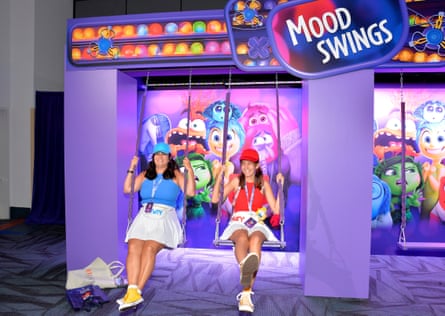
In one sign of Disney’s efforts to connect with younger viewers, the company announced a $1.5bn investment in Epic Games, the creator of Fortnite, and promised an ongoing partnership to bring more Disney-owned characters and storylines into the gaming universe. An estimated 1.2 million players took part in Disney’s announcement of its further Epic Game collaborations last weekend, which was livestreamed within Fortnite, Disney said.
Disney is also working with gen Z content creators on TikTok to produce viral videos reaching a different generation, and its fan conference featured creators who had built major followings on their love of Disney.
But it’s not clear how well these marketing tactics might address deeper generational shifts.
“Fandom was a really big thing with millennials,” said Matthew Ho, 22, who had come to the Disney conference with his family, including his millennial cousin, Anna Hayden, 34, who was dressed as Belle from Beauty and the Beast and carrying a similarly costumed American Girl doll. Gen Z is part of fandoms, Ho said, but “it’s not like the new thing”.
What gen Z want
When it comes to film, Disney’s competition for gen Z viewers is no longer just other major film and TV studios: it’s the vast ecosystem of online content. One Deloitte 2024 consumer research study found that younger viewers “prefer social media videos to any other form of video content” and that gen Z survey respondents preferred user-generated content because it meant they didn’t “have to spend time searching for what to watch”.
When it comes to theme parks, younger consumers want their entertainment experiences to be “interactive” and “authentic”. These are both challenging demands for theme parks crafted for baby boomers who were very happy to sit back and enjoy a “mass consumer experience”, said Scott Smith, an associate professor at the University of South Carolina who researches theme parks.
But making rides more interactive doesn’t have to be rocket science, Smith said. Disney’s popular Buzz Lightyear ride took a standard 1970s Haunted Mansion-style ride and added an interactive laser gun element allowing riders to accumulate points for what they hit, he said – resulting in “one of the highest repeated riderships” at Walt Disney World.
Many gen Z fans at Disney’s convention expressed frustration with the studio’s seemingly endless production of sequels – during its fan weekend, the company offered updates on Toy Story 5, Frozen 3, The Incredibles 3 and Moana 2.
But some of Disney Entertainment’s recent moves to appeal to gen Z seem to be working. Ayaz said Inside Out 2, an animated film about anxiety, was popular with gen Z viewers. Multiple gen Z fans at the conference confirmed that, naming Inside Out 2 as a film that had resonated more with them than Disney’s other recent efforts.
Mari Earnshaw, a 17-year-old self-described “theater kid” from Orange county, said she and her friends were definitely more enthusiastic about the classic Disney films than many of their peers. She wasn’t surprised that few people her age had showed up for a “behind-the-scenes”-style fan event.
“They would rather go to Disneyland than this type of event,” she said. “We know a lot of people who still love Disney and go to Disney.”
The “million-dollar question”, Smith said, was whether gen Z might simply be temporarily less interested in Disney, as a result of their age group, or whether their tastes might actually have shifted more permanently.
For Americans, going to a Disney park has been akin to attending a weekly religious service – something that teens and young adults might stop doing for a while, but that they often resume again once they become parents, said Bethanee Bemis, who recently curated an exhibit at the Smithsonian on the reflection of American history in Disney’s park.
“The real marker of whether or not Disney has a ‘gen Z problem’ will be whether that generation still feels the pull of bringing their children to their parks,” she said.
Source: theguardian.com










